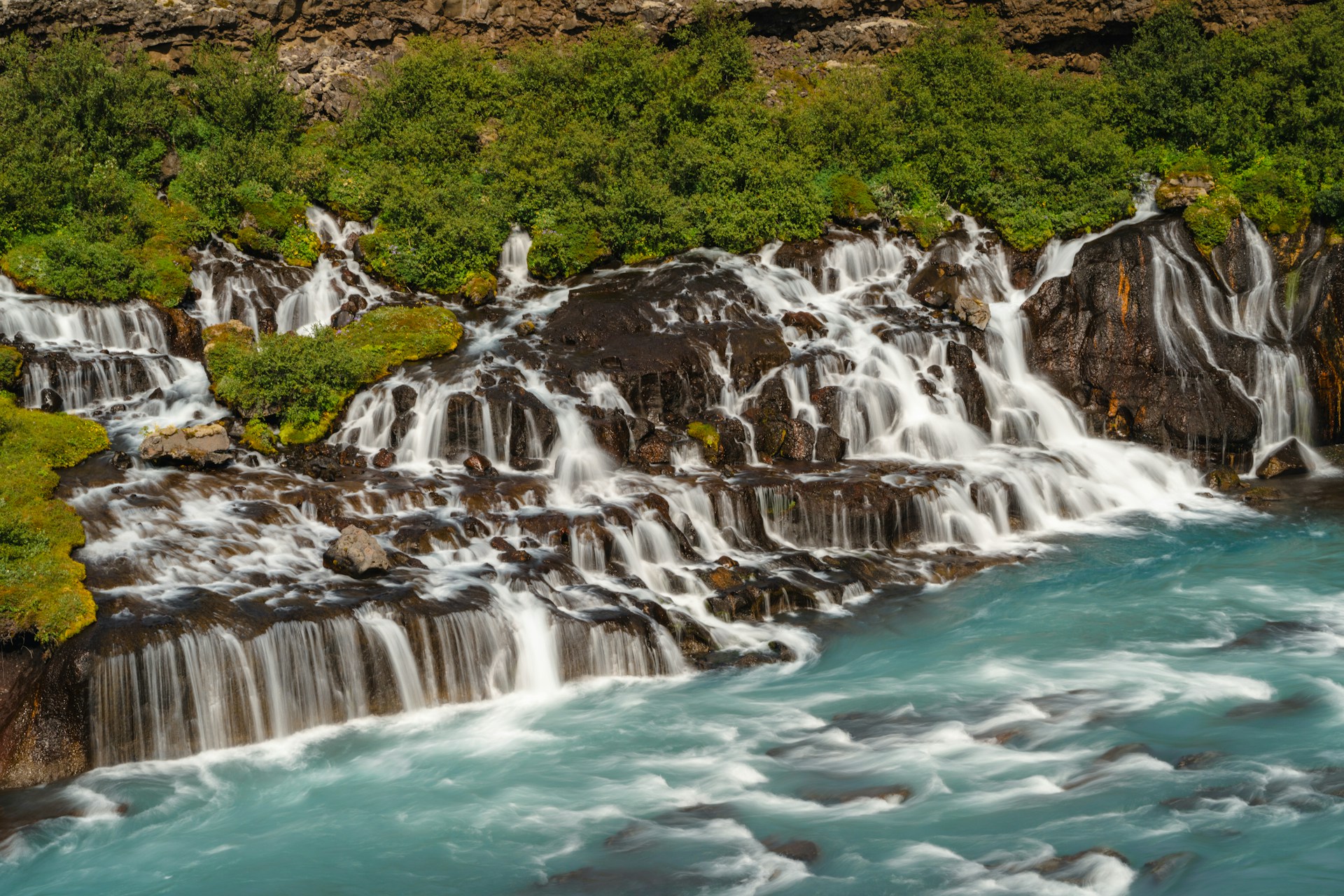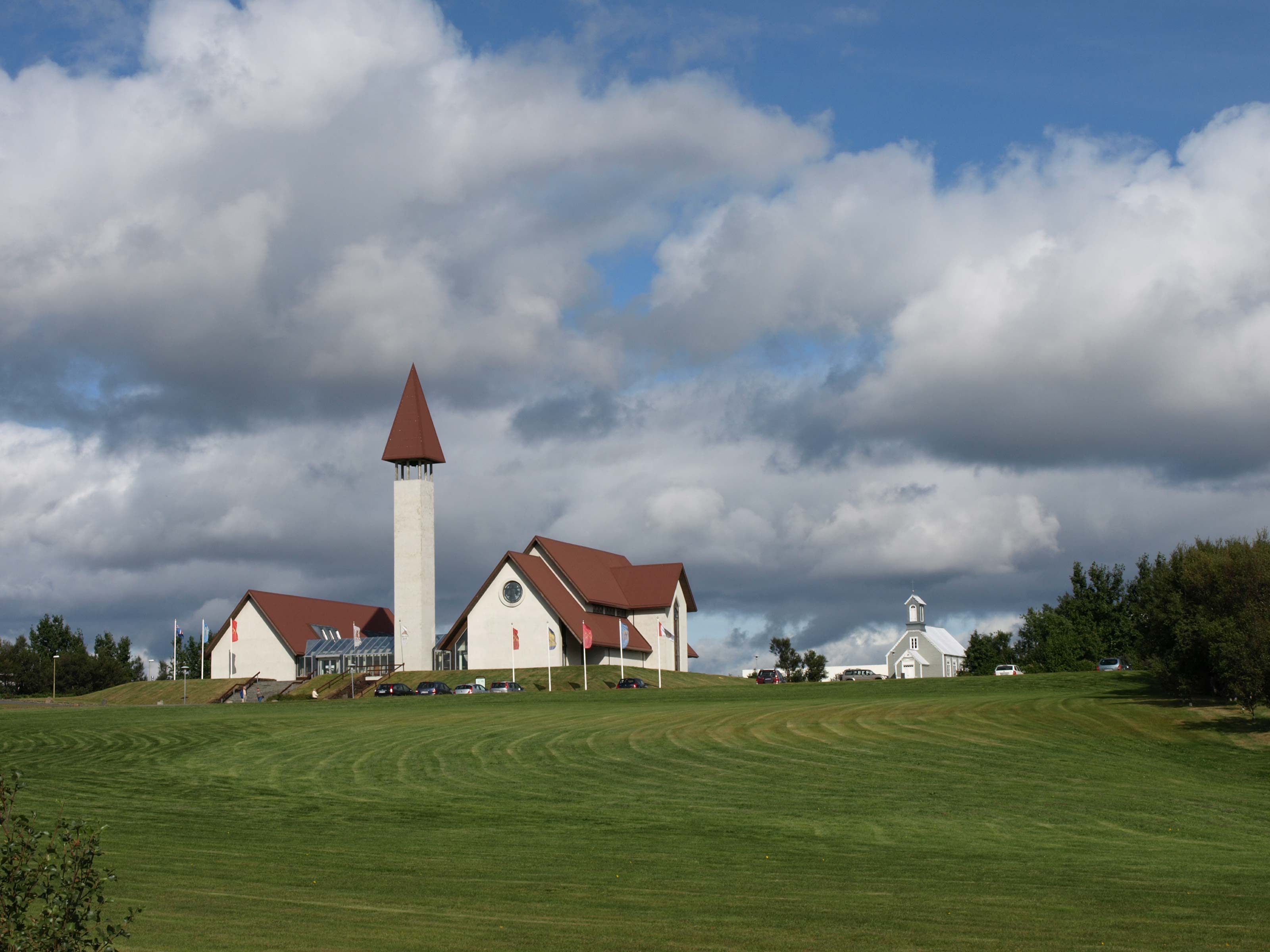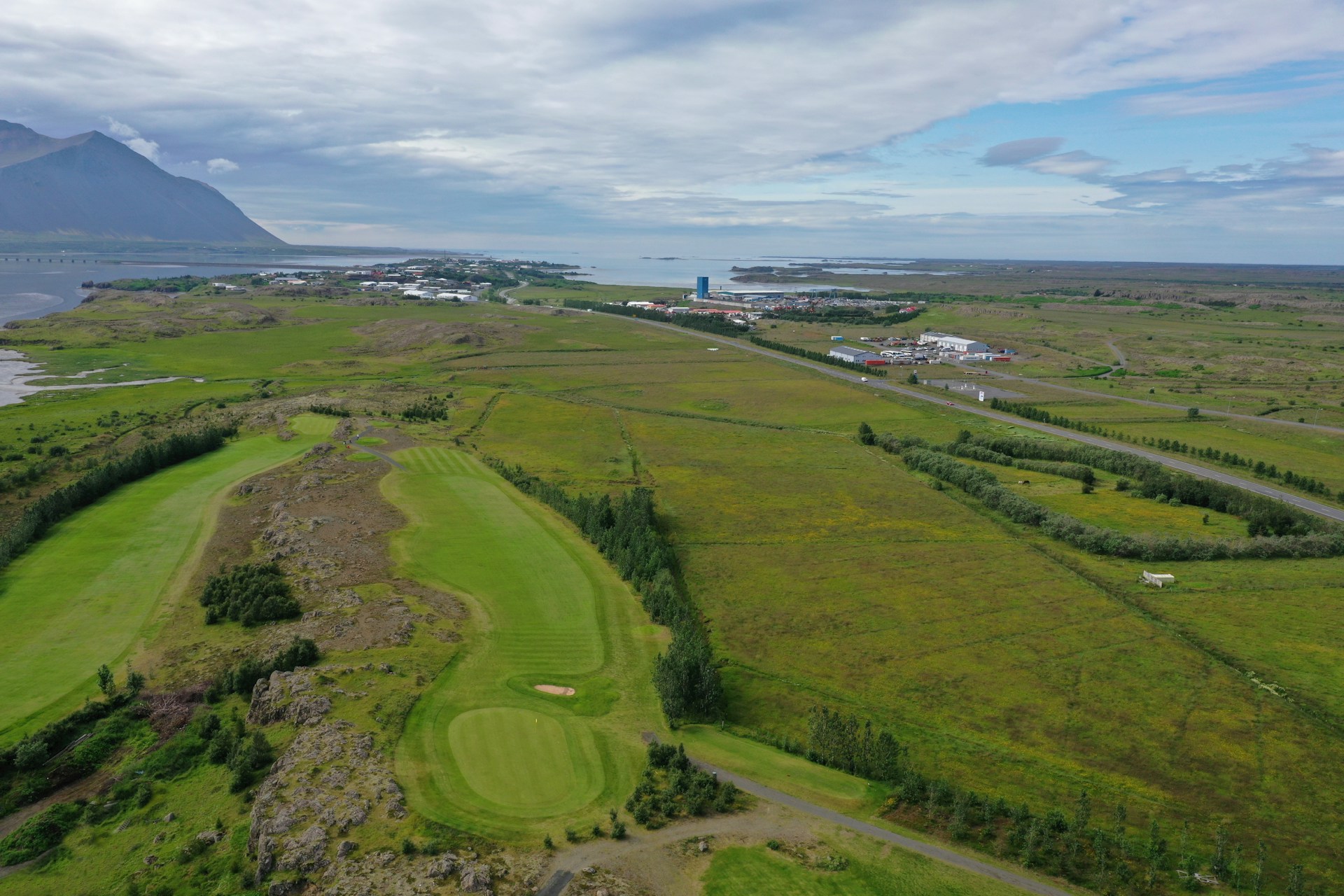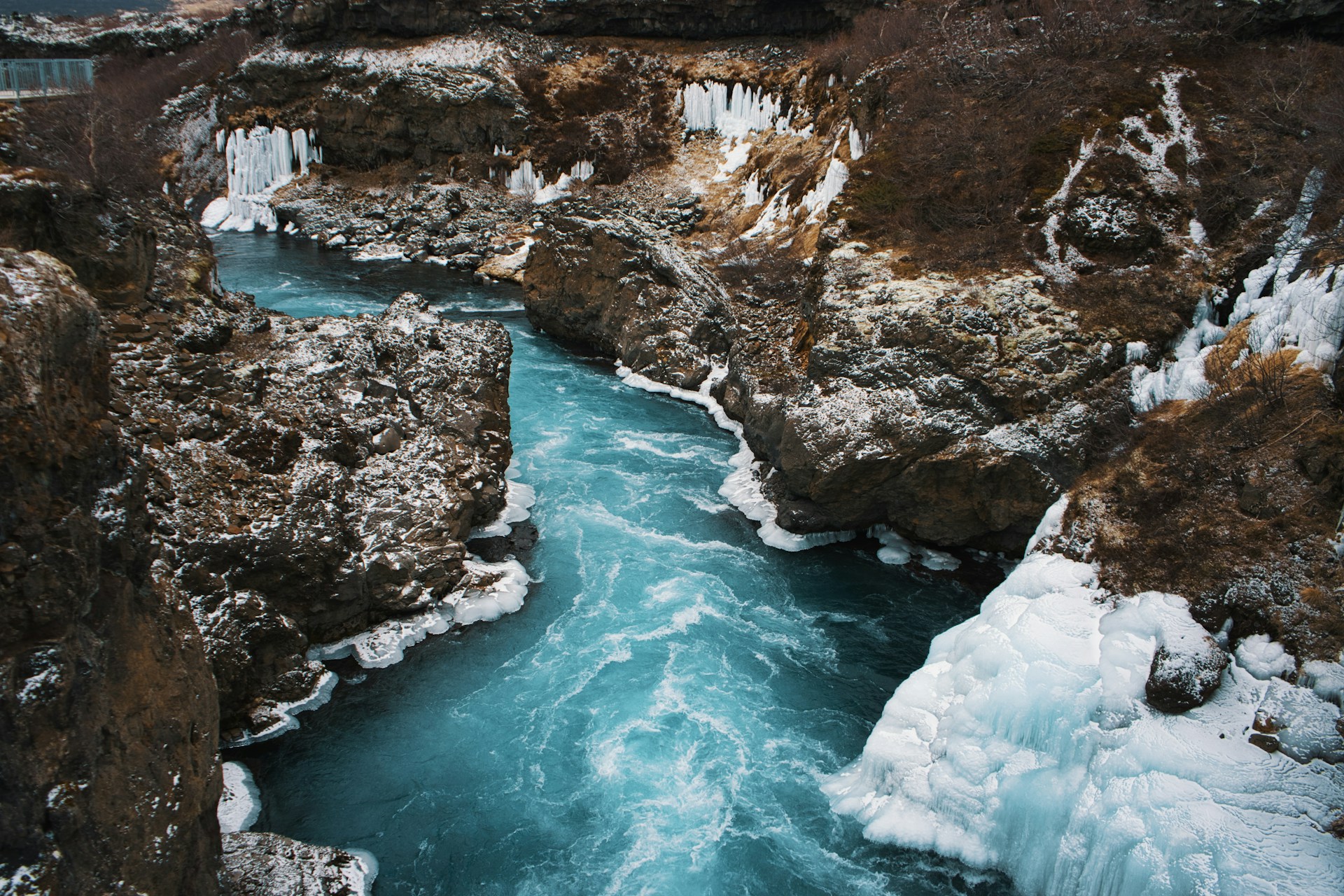When most travelers think of Iceland's scenic routes, the famous Golden Circle immediately comes to mind. However, there's a lesser-known alternative that offers equally stunning landscapes without the overwhelming crowds: the Silver Circle. This hidden gem route in North Iceland showcases some of the country's most breathtaking natural wonders, and if you're looking to experience the authentic beauty of Iceland away from tourist buses, this is the journey for you.
What is the Silver Circle?
The Silver Circle is a scenic driving route that loops through the beautiful Borgarfjörður region in West Iceland. While it doesn't have the official recognition of the Golden Circle, it's quickly becoming a favorite among travelers who want a more authentic Icelandic experience.
The route covers roughly 150-200 kilometers depending on which attractions you include and how many detours you take. It starts from Reykjavik, heads north through historic towns and stunning natural sites, then loops back to the capital. The best part? You can customize it based on your interests and time.
Unlike the Golden Circle where you'll find parking lots full of tour buses and hundreds of selfie sticks at every waterfall, the Silver Circle maintains that peaceful, remote feeling that makes Iceland so special.
The Main Attractions Along the Silver Circle
Deildartunguhver - Europe's Most Powerful Hot Spring

Let's start with something that'll blow your mind - literally, with all that steam. Deildartunguhver is not just any hot spring. It's the most powerful hot spring in all of Europe, pumping out an incredible 180 liters of boiling water every single second. To put that in perspective, that's enough hot water to fill a bathtub in less than a second.
When you arrive, you'll see thick clouds of steam rising from the ground, creating an almost mystical atmosphere. The water here reaches temperatures of around 97°C (207°F), which is close to boiling point. It's so powerful that the nearby towns of Borgarnes and Akranes use this water for their central heating systems through underground pipes. The entire heating system for thousands of homes comes from this one spot - that's Iceland's geothermal ingenuity for you.
You can walk around the spring area on wooden boardwalks that keep you safe from the scorching hot water below. The ground around the spring is stained with minerals - orange, yellow, and white deposits that look like an artist's palette. The air smells strongly of sulfur (like rotten eggs), which might take a minute to get used to, but it's all part of the authentic geothermal experience.
Hraunfossar and Barnafoss - The Twin Waterfalls

Just a short drive from Deildartunguhver, you'll find two of Iceland's most unique waterfalls sitting right next to each other. These aren't your typical thundering waterfalls - they're something entirely different and equally mesmerizing.
Hraunfossar (which translates to "Lava Falls") is unlike any waterfall you've seen before. Instead of water falling from a cliff, hundreds of small streams emerge directly from beneath a 900-meter-long lava field. Crystal-clear, bright turquoise water seeps out from between the black volcanic rocks and flows into the Hvítá River below.
The lava field was formed thousands of years ago during a volcanic eruption beneath the Langjökull glacier. Over time, water from the glacier has found paths through the porous lava rock, creating these beautiful cascades. The contrast between the black lava, bright blue water, and green moss is absolutely stunning. Depending on the season, you might also see autumn colors or winter snow adding even more beauty to the scene.
Walk just 200 meters downstream, and you'll reach Barnafoss (Children's Falls), which is completely different. This waterfall crashes through a narrow, twisted canyon with incredible force. The rapids are wild and powerful, carving their way through the volcanic rock.
The name comes from a tragic legend from centuries ago. The story goes that two children from a nearby farm tried to cross a natural stone arch over the river while their parents were at church. They fell into the rapids and drowned. The heartbroken mother had the stone arch destroyed so no other children would be tempted to cross it. While it's a sad tale, it reminds us of how powerful and dangerous Iceland's nature can be.
Reykholt - Walking Through Medieval History

If you're interested in Iceland's fascinating history, Reykholt is an absolute must-visit. This small settlement was once the home of Snorri Sturluson, arguably Iceland's most important medieval writer and historian. He lived here in the 13th century and wrote the Prose Edda and Heimskringla, works that are essential to understanding Norse mythology and Scandinavian royal history.
The main attraction here is Snorralaug, Snorri's personal hot spring pool. This circular stone pool, about 4 meters across, has been here since around 1210 AD. Yes, you're looking at a pool that's over 800 years old! Snorri used this pool almost daily, and there's even an underground passage that connected it to his house so he could reach it during harsh winters.
While you can't bathe in the historic pool (it would damage this important archaeological site), you can walk right up to it and peer into the clear water that still fills it today. The water comes from nearby hot springs and maintains a pleasant bathing temperature naturally. Standing there, you can almost imagine Snorri himself soaking in these same waters, thinking about the stories he would write.
The Snorrastofa Cultural Center sits right next to the pool. This modern research center and museum is dedicated to Snorri's life and work, as well as medieval Icelandic culture in general. Inside, you'll find exhibitions about the Sagas, medieval manuscripts, and life in 13th-century Iceland. Even if you're not normally into museums, this one does a great job making history interesting and accessible.
Krauma Geothermal Baths - Your Perfect Relaxation Stop

After several hours of sightseeing and walking, you'll be ready for some serious relaxation, and Krauma delivers exactly that. This geothermal spa opened in 2017 and has quickly become one of Iceland's favorite bathing spots - and for good reason.
Krauma uses water directly from Deildartunguhver (which you visited earlier). The water comes out of the ground at 97°C, way too hot for bathing, so it's mixed with cold glacial water from the nearby Ok glacier. This creates the perfect bathing temperature of around 38-41°C (100-106°F).
The facility has six different baths: five hot pools of varying temperatures and one cold tub kept at 5-8°C (41-46°F). The pools are beautifully designed with natural stone and wood, blending perfectly into the surrounding landscape. Large windows overlook the geothermal area, so you can watch the steam rising from Deildartunguhver while you soak.
Here's why many people actually prefer Krauma to the more famous Blue Lagoon:
- It's less crowded: While the Blue Lagoon can feel like a crowded swimming pool during peak times, Krauma limits visitor numbers, so it always feels peaceful and spacious.
- It's more affordable: Entrance costs roughly half what you'd pay at the Blue Lagoon, and the experience is just as good - some say even better.
- It's more authentic: The water here is completely natural and fresh. They don't add anything to it or recirculate it. The hot water that flows into the pools comes straight from the ground that day.
The facility also includes two saunas - a traditional Finnish-style sauna and a relaxation room with gentle steam. Many visitors like to rotate between the hot pools, cold plunge, and sauna, which is an incredibly rejuvenating experience. The cold plunge might sound scary, but even just 30 seconds in the cold water after the hot pools will make you feel absolutely amazing.
There's a nice relaxation area inside with lounge chairs where you can nap or read between soaks. The on-site restaurant (Kjarr) serves delicious Icelandic dishes made with local ingredients. Their lamb soup is legendary among regulars.
Practical information:
- Book your spot online in advance, especially during summer months or weekends
- Standard admission includes about 2-3 hours, which is plenty of time
- Towels and bathrobes can be rented if you don't bring your own
- There are good changing facilities and showers (you must shower before entering the pools - it's Icelandic bathing culture)
- They sell basic swim gear if you forget yours
Most people spend 2-3 hours here total, though you could easily make it longer if you're not in a rush.
Víðgelmir Lava Cave - Journey to the Center of the Earth

If you want to experience something truly unique, exploring Víðgelmir lava cave is an absolute must. This is one of Iceland's largest and most spectacular lava caves, stretching over 1,600 meters long with some sections reaching 15-16 meters in height. Walking through this underground world is like stepping onto another planet.
The cave was formed about 1,100 years ago during a volcanic eruption. Rivers of molten lava flowed through here, and when the surface cooled and hardened, the hot lava beneath continued flowing, eventually draining away and leaving behind this massive empty tube.
You can only visit Víðgelmir with a guided cave tour (you can't explore on your own), which is actually great because the guides share fascinating information about how these caves form, the history of the cave, and point out features you'd otherwise miss. Most tours last about 60-90 minutes.
Inside the cave, you'll find:
- Incredible rock formations
- Ice sculptures
- Stalactites
- Three-dimensional lava flows
Borgarnes - The Gateway Town

Borgarnes is the main town in the region and makes a perfect lunch stop or base if you're spending the night. While it's not a "sight" in the traditional sense, it's worth spending an hour here.
The Settlement Center (Landnámssetur) has an excellent exhibition about Iceland's settlement and the famous Egils Saga. The two-floor exhibition uses life-size displays, audio guides, and interactive elements to bring Iceland's history to life. It's especially interesting if you're into Viking history and the saga literature.
For food, try Settlement Center Restaurant for traditional Icelandic dishes, or Geirabakarí for amazing pastries and sandwiches - their kleina (Icelandic twisted donuts) are fantastic. There's also a good supermarket (Bónus) if you need to stock up on snacks or drinks for the road.
The town sits on a beautiful fjord with mountain views, and there's a nice walking path along the water if you want to stretch your legs between driving.
Hidden Gems and Extra Stops
If you have extra time or want to make your Silver Circle journey even more special, consider these additions:
Húsafell
This small settlement at the edge of the highlands is known for its beautiful birch forest (rare in Iceland) and artistic heritage. The pool and hot tubs here are favorite spots for locals. It's also the starting point for tours into Langjökull glacier and more remote lava caves.
Surtshelir Cave
Another impressive lava cave system that you can actually explore on your own (unlike Víðgelmir). It's less developed, which means more adventure but also more caution needed. Bring good flashlights.
Glanni Waterfall
A lovely smaller waterfall that's less visited but very picturesque. Great for a peaceful break and photos without any crowds.
Grábrók Crater
An easy 15-minute hike up a volcanic crater with fantastic 360-degree views. There's a wooden staircase most of the way up, making it accessible for most fitness levels.
Planning Your Silver Circle Trip

Best Time to Visit
Summer (June to August) offers the longest days and easiest driving conditions. You'll have nearly 24 hours of daylight to explore. However, spring (April-May) and fall (September-October) bring beautiful colors and still decent weather with fewer visitors.
Winter (November to March) can be magical with snow-covered landscapes, but roads can be challenging. If you're not confident driving in winter conditions, consider joining a guided winter tour instead.
How Long Do You Need?
You can cover the main highlights in one long day, but I recommend taking two days if you can. This lets you relax at Krauma, spend more time exploring the lava caves, and maybe even stay in a countryside guesthouse. Rushing through means you'll miss the peaceful atmosphere that makes the Silver Circle special.
Getting There
The Silver Circle starts about an hour's drive from Reykjavik. You'll head north on Route 1, then take Route 50 into the Borgarfjörður region. The roads are well-maintained, and the route is easy to follow.
If you don't want to drive yourself, many tour operators offer Silver Circle day tours from Reykjavik. These often combine the route with other West Iceland attractions, giving you a guide who knows all the best spots and stories.
Combining With Other Tours
The Silver Circle works great with other West Iceland adventures. Many visitors combine it with a Snæfellsnes Peninsula tour to make a longer trip. The peninsula is famous for its dramatic coastlines, Kirkjufell mountain, and diverse landscapes - sometimes called "Iceland in Miniature."
You could also add a glacier tour or ice cave exploration to your itinerary. The nearby Langjökull glacier offers year-round ice tunnel tours where you can walk inside a glacier. For something different, whale watching tours from nearby coastal towns make a perfect addition to your trip.
If you're interested in more volcanic landscapes, a lava caving tour pairs perfectly with the Silver Circle. Beyond Víðgelmir, there are other caves in the area worth exploring with experienced guides.
Is the Silver Circle Worth It?
Absolutely! If you want to see Iceland's natural beauty without the crowds, the Silver Circle is perfect. It gives you the "real Iceland" experience - dramatic nature, interesting history, and peaceful landscapes. Whether you're visiting for the first time or coming back to explore more, this route offers something special.
The combination of geothermal power, waterfalls, lava formations, and history creates a well-rounded Iceland experience. You'll come away with amazing photos, interesting stories, and a deeper appreciation for this incredible island.
So next time someone talks about Iceland's Golden Circle, you can tell them about the Silver Circle - the route locals wish would stay secret just a little longer.


